Search Images
Browse Content (p. 1219)
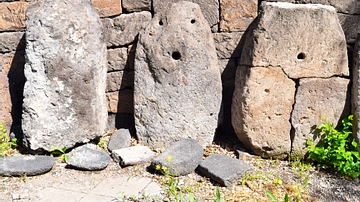
Image
Stone Tools at Shengavit Settlement
Stone tools and other archaeological remains from Shengavit, dating from c. 3500-2200 BCE. This settlement is an archaeological site located in Yerevan and is one of Armenia's most important Bronze Age sites.
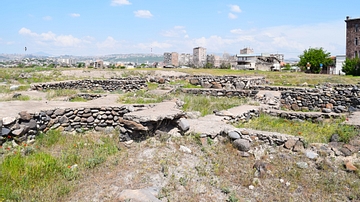
Image
Shengavit Archaeological Site
Shengavit is an archaeological site located in a suburb of present-day Yerevan, near Lake Yerevan, and it is one of Armenia's most important prehistoric and Bronze Age sites. It flourished from c. 3500-2500 BCE.
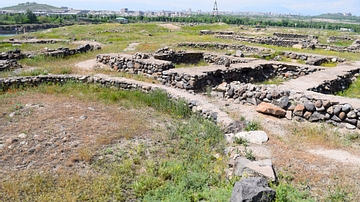
Image
Shengavit Settlement
Flourishing between 3500-2200 BCE, the Shengavit settlement in present-day Yerevan, Armenia was an important site of prehistoric and Bronze Age habitation in the Near East. Here one can see that dwellings were constructed in circular shapes...
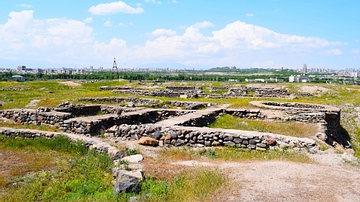
Image
Shengavit Ruins
Shengavit was a prehistoric and ancient settlement (c. 3500-2200 BCE) in what is present-day Yerevan, Armenia. It was an enclosed settlement within a cyclopian wall made of stones. Foundations for houses were made from river stones or split...
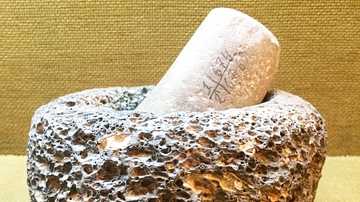
Image
Prehistoric Mortar from Shengavit
Prehistoric mortars and pisteles made from stone which were found at Shengavit Settlement (c. 3500-2200 BCE) in Armenia. (Shengavit Museum, Yerevan).
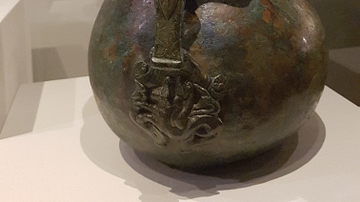
Image
Bronze Pitcher From Pompeii
A bronze pitcher with Nereid (sea nymph). 1st century CE. Soprintendenza Archeologica di Pompei, (photo taken at the National Maritime Museum, Sydney Australia) Utensils for serving food were another way of showing your wealth. This bronze...
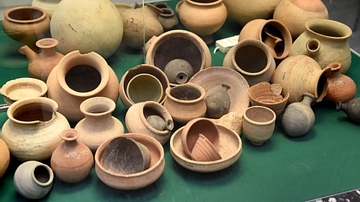
Image
Pottery from the Amarneh Cemetery at Til Barsip
Much of the known pottery from the Euphrates region comes from tombs, often in large cemeteries attached to settlement sites. The tombs are of a variety of types, but most typically they consist of rock-cut or stone-built subterranean chambers...
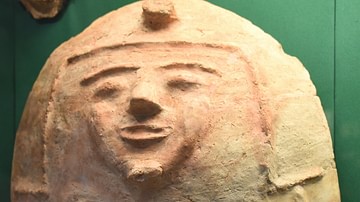
Image
Philistine Coffin Lid from Lachish
Anthropoid pottery lid of a slipper coffin. It was hand-made by coil technique. The facial features were mould-made. There are faint traces of red paint. Philistine. Late Bronze Age. From Tomb 0570 at Lachish, modern-day Israel. (The British...
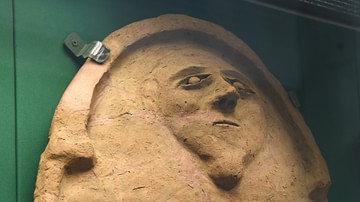
Image
Philistine Coffin Lid from Tell Nabasha
Lid from a Philistine terracotta coffin. Applied facial-detail and arms. 20th Dynasty, 1400-1150 BCE. From Tell Nabasha, Nile Delta, modern-day Egypt. (The British Museum, London)
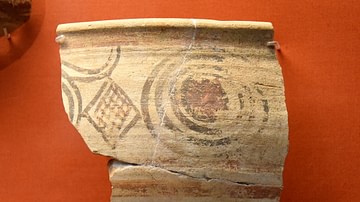
Image
Philistine Pottery Sherd
Following their settlement in the Levantine coast at the beginning of 12 century BCE, the Philistines began to produce a local variant of the Mycenaean pottery known as "Mycenaean IIIC1B". Initially, this was quite simple in its designs and...